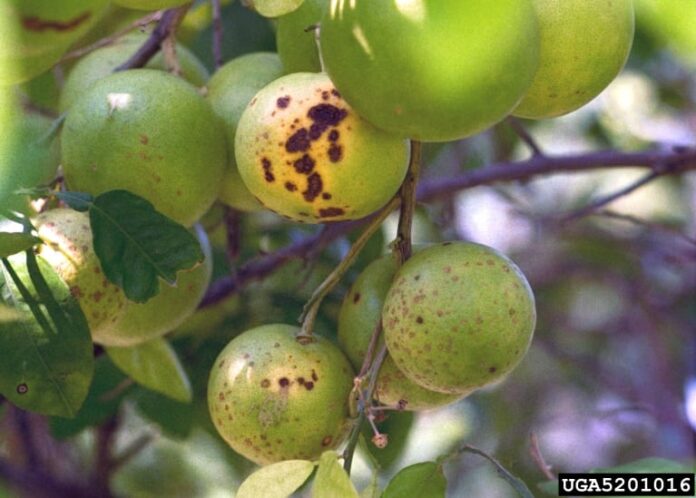AUBURN UNIVERSITY, Ala.— The recent introduction of new diseases and lack of cold hardiness can make citrus a challenging fruit to grow in some parts of Alabama. However, many homeowners in the southern portion of the state have a backyard citrus tree that can survive cold snaps with proper care and maintenance.
Citrus a Popular Backyard Tree
Alabama Cooperative Extension System Horticulture Specialist, Jeremy Pickens, said as a garden plant, citrus provides a unique texture, season-long dark green foliage, a unique fragrance when in bloom and colorful edible fruit.
“Learning how to properly care for citrus in the home garden will keep trees productive for years to come,” Pickens said. “Healthy plants are more resistant to diseases and insects. Proper installation and maintenance are important to produce healthy plants.”
Tree Selection
Homeowners should purchase trees from a certified nursery. Inspected nurseries will pass examinations by state or federal inspectors to confirm the nursery is producing clean, disease-free plant material.
“Citrus trees grown in a certified nursery will have a tag stating the name of the nursery, registration number, the tree variety and rootstock,” Pickens said.
The following are some tips for homeowners to keep in mind when choosing citrus trees:
- Examine trees for symptoms of pest damage or disease.
- Trees should have dark-colored leaves and a smooth trunk.
- Consider choosing varieties based on cold tolerance—the best-suited rootstock for Alabama is trifoliate orange.
- Choose plants 5/8 – 1 inch in diameter and 2 – 4 feet tall.
- Look for trees with three to four upward-growing side branches.
- Avoid trees with sharp angles that will break under pressure with a heavy crop load.
Planting and Site Selection
Growers can plant citrus any time during the year. However, an early spring planting time is a wise choice to avoid freeze damage.
“A planting location in full sun on the south side of the home is typically warmer, although citrus can be grown less productively under shade,” Pickens said.
Planting site considerations include
- remove weeds and plant material from the area
- the planting hole should only be as deep as the root ball
- the soil line should be level with the tree’s root flare
- do not plant the tree any deeper than it was in the pot
- fill the remaining area with native soil
Watering, Fertilization and Pruning
Water and fertilizer are important to the establishment of the tree and its growth. From March through June, water the trees twice a week—or 1 – 2 gallons—if there isn’t enough rainfall.
Pickens said citrus are considered heavy feeders and can handle high fertilizer rates. Consider taking a soil sample and submitting it for testing through the Auburn University Soil, Forage and Water Testing Laboratory to determine the correct amounts of fertilizer and lime to apply. Split the total annual fertilizer recommendation into three applications. To make the timing easier to remember, fertilize near Easter, Mother’s Day and Father’s Day. Avoid nitrogen applications between September and February, as it will increase the risk of cold damage.
Citrus growers should remove suckers from the base of young trees to prevent issues with tree development. Unlike other fruit trees, mature citrus do not require training and pruning.
“Prune lightly to shape the tree or to remove dead or damaged limbs,” Pickens said. “Excessive pruning usually results in reduced fruit production, vertical shoots or suckers.”
Container-Grown Citrus
Central and north Alabama gardeners can consider patio citrus, grown in containers.
“Dwarfing citrus varieties tolerate container confinement quite well,” Pickens said. “Container-grown citrus allow gardeners to move the plant indoors in case of an imminent freeze.
It is important to remember; however, container citrus do not have the added insulation of ground temperatures. Therefore, container citrus are more susceptible to mild freezes.
More Information
Homeowners can learn more about caring for backyard citrus or growing patio citrus in the Alabama Extension publication Citrus Tree Care for the Home Gardener (https://www.aces.edu/blog/topics/fruits-lawn-garden/citrus-tree-care-for-the-home-gardener/). Additional information about regulated and unregulated citrus pests in Alabama can be found in the publication Citrus Pest Identification and Management Guide (https://www.aces.edu/blog/topics/ipm-farming/citrus-pest-identification-and-management-guide/).





















